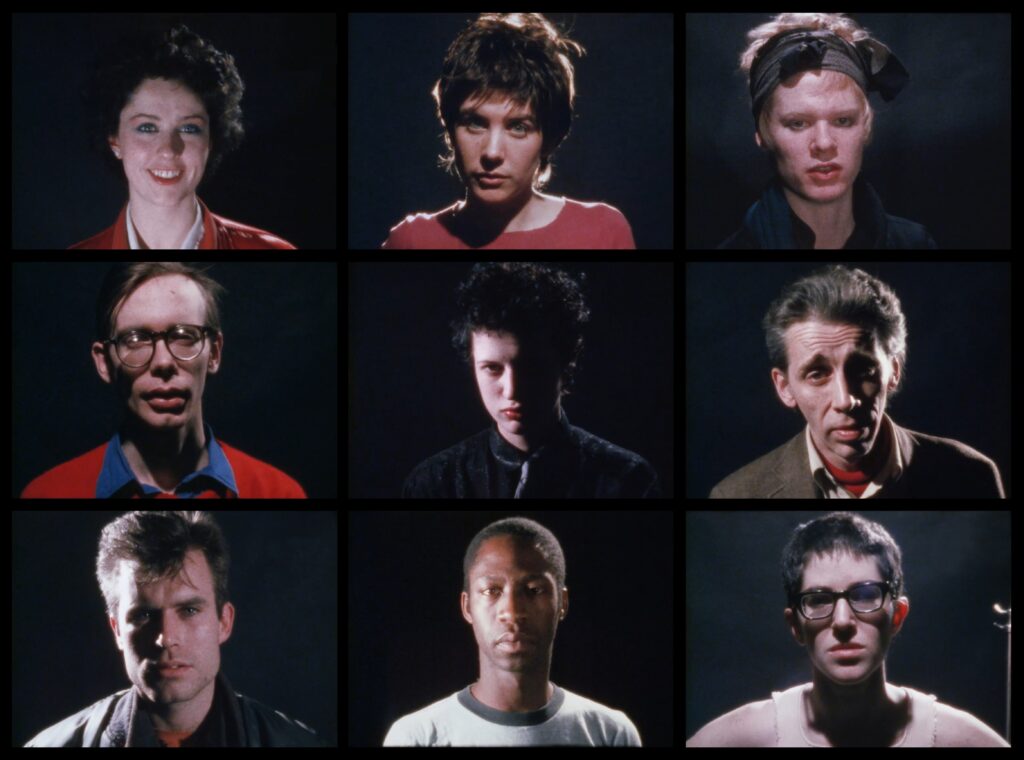
In some in-between times, artists resort to effect – a form of expression that brashly avoids polished technique and stylish finesse. That was the case in the mid-1970s, an interstitial period in the United States, with the OPEC oil crisis in 1973, the end of the Vietnam War in 1975, stagflation (inflation plus low employment) and baby boomers entering the workplace. In New York City, many artists-to-be were moving into cheap East Village apartments and squats in the lettered streets farther east. In 1975, Talking Heads got together, and John Cale produced Patti Smith’s album Horses. In 1976, Manhattan was bankrupt, and young musicians and artists with spiky hair, torn trousers and leather jackets voiced their disgust with disco and preppy or Saturday Night Fever chic by playing thrashing, noisy, rancid rock in Downtown nightclubs like Max’s Kansas City (1965-81), CBGB (1973-2006) and the Mudd Club (1978-83). The band Sonic Youth got together in 1981, and in the same year, the East Village art scene’s anti-commercial “No Wave” experiment was born.
An exhibition at the Center Pompidou, “Who You Staring At: Visual Culture of the No Wave Scene in the 1970s and 1980s,” celebrates that very particular moment in time. The title is from a 1982 album by poet/performance artist John Giorno and guitarist/composer Glenn Branca. The exhibition features a number of television monitors with headsets, a few vitrines with period paraphernalia (posters, flyers, vinyl records, magazines), a small selection of cartoon-styled drawings by Raymond Pettibon and graphite-based drawings by Joseph Nechvatal — two artists who exemplified the period. Two of Sonic Youth’s core members, Kim Gordon and Thurston Moore, are featured in the show, for which an opening-night performance by guitarist/composer Rhys Chatham provided a live soundtrack. Together, the disparate pieces of the exhibition make a statement about the short life of a “movement” that nevertheless had a lasting effect on art.
More raw than cooked, non-commercial No Wave art was the antithesis of minimalism and more like a punk version of conceptual Pop Art, but one that used the devices of the era: Xerox, fanzines, vinyl records, video and even television – cable television was just taking off, selling time cheap in the wee hours of the night, enabling writer Glenn O’Brien to create his talk show “TV Party,” on which he chatted with his boomer friends, among them David Byrne, Debbie Harry, and Jean-Michel Basquiat.
No Wave had a short run but lived on as an underground movement. Meanwhile, the chic celebrity-infested Studio 54 opened in 1977 and New Wave painting and music started to take off, vastly increasing commercialism in art and finally leaving No Wave little more than a memory, though one that many felt deeply.
See our list of Current & Upcoming Exhibitions to find out what else is happening in the Paris art world.
Favorite
